T-0
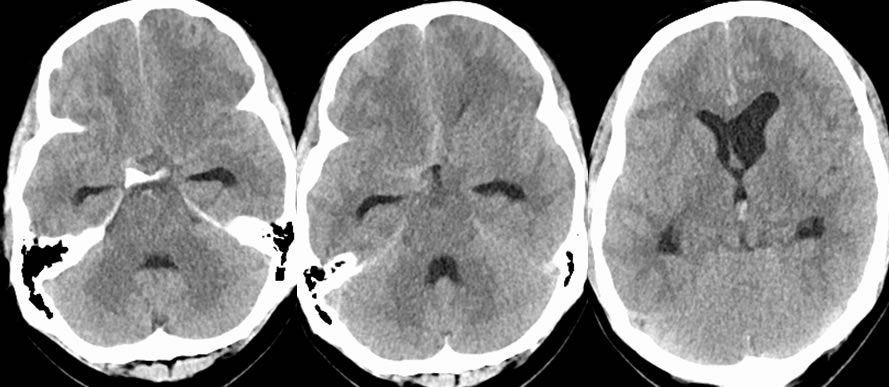 \
\
T-3 weeks
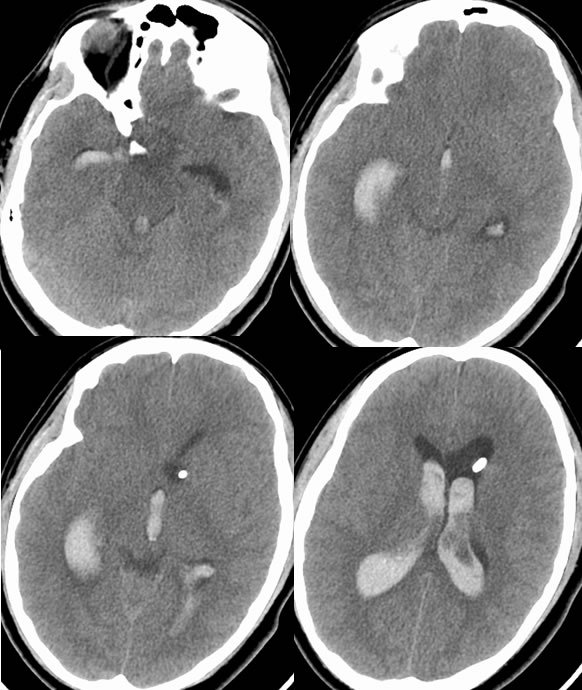
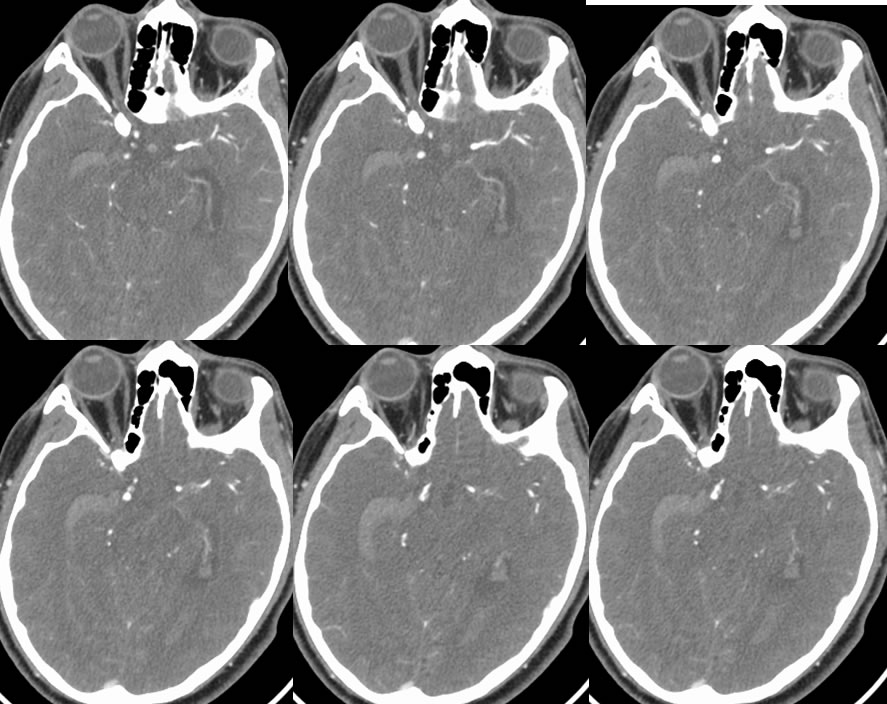
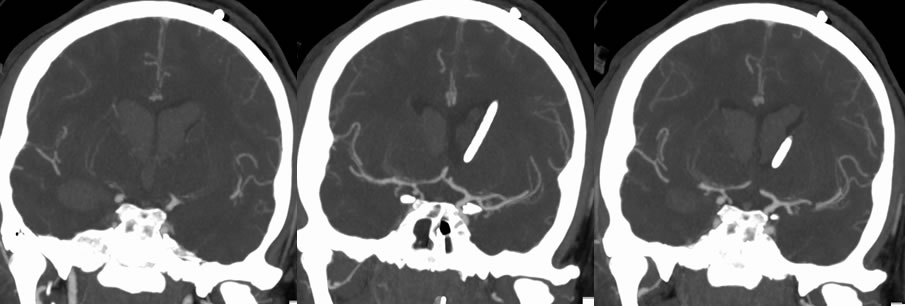
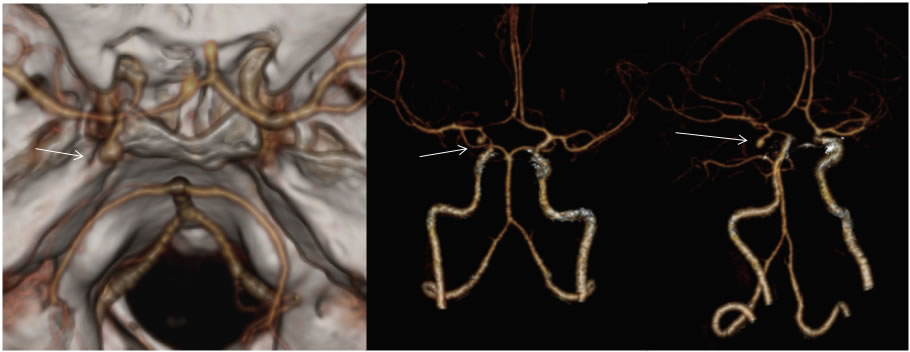
Saccular Aneurysm, Right Posterior Communicating Artery with Predominant Intraventricular Hemorrhage
Findings:
Axial noncontrast CT images demonstrate a small amount of subarachnoid hemorrhage in the right aspect of the suprasellar cistern extending into the interhemispheric fissure. There is also a small amount of hemorrhage within the third ventricle. Follow-up CT performed approximately three weeks later demonstrates a large amount of intraventricular hemorrhage. A small amount of subarachnoid hemorrhage is seen in the right aspect of the suprasellar cistern. The CTA images demonstrate an aneurysmal projection involving the communicating segment of the right internal carotid artery, which is closely related to the zone of subarachnoid hemorrhage leading into the ventricular system.
Discussion/Differential Diagnosis:
Ventricular hemorrhage has a wide differential diagnosis, including posttraumatic, extension from parenchymal hemorrhage, AVM, ruptured aneurysm, severe hypertension, tumor, and coagulopathy. Isolated or predominantly intraventricular hemorrhage related to aneurysm rupture is uncommon (less than 2%), but may occur in the presence of subarachnoid adhesions, compartments, and loculations that may result from previous unrecognized aneurysm leakage, which then direct new hemorrhage toward the choroidal fissure and temporal horn. Aneurysms of the ICA communicating segment most commonly cause isolated IVH in case reports, but even more rarely may occur with PICA rupture. The presence of IVH and SAH is generally a poor prognostic indicator and development of hydrocephalus is likely.
BACK TO
MAIN PAGE
 \
\
 \
\



